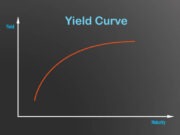
When it comes to the world of property law, it’s essential to know the nuances between real property and personal properties. Both of these are important types of properties, but they differ in many ways. Understanding these differences is crucial, whether you’re buying, selling, or owning a property. In this blog post, we delve deeper into the definitions of real and personal properties, the differences between them, and how to distinguish them.
Definition of Real Property:
Real property or real estate refers to the land, the buildings and the natural resources located on it. It includes everything permanently attached to the land, such as trees, crops and even mineral deposits buried beneath its surface. Buildings and fixtures form part of real property, too, such as houses, garages, barns, and fences. Essentially, real property is immovable and cannot be moved from one location to another.
Definition of Personal Property:
Personal property, on the other hand, refers to any movable item or asset that a person owns. It is everything that furnishes the home, such as furniture, appliances, electronics, and personal possessions like clothing, jewelry, and art. It also includes vehicles like cars, trucks, boats, and RVs, as well as financial assets like stocks, money, and securities. In essence, personal property can be moved from one location to another.
Ownership and Modes of Transfer:
A significant difference between real property and personal property is how they are owned and transferred. Real property is typically transferred through a legal conveyance, such as a deed, which transfers the title of the property from one party to another. Ownership is usually recorded on a land registry, which maps the boundary lines of the property and details its legal history.
Personal property, on the other hand, is usually transferred through a bill of sale, which details the transfer of ownership from one party to another. This mode of transfer is less complicated than the transfer of real property, and ownership is not typically recorded on a central registry.
Taxation and Laws Governing Each:
There are different laws governing real property and personal property, and each is subject to different taxation practices. Real property, for instance, is subject to property taxes, while personal property is not. On the other hand, personal property may be subject to sales tax or excise tax on certain items.
Real property is also governed by zoning laws, environmental regulations, and building codes, among other land-use regulations. Personal property, by contrast, is subject to a much lesser degree of regulation, generally confined to consumer protection laws and regulations that restrict the import or export of specific items.
Conclusion:
Real property and personal property are essential concepts in the realm of property law. Understanding the distinctions between them is crucial, whether you are purchasing or selling a property. Real property encompasses the land and the things permanently attached to it, while personal property is movable and can be transported from one location to another. Ownership of these two types of properties also differs, as does their mode of transfer and taxation, among other things.


































